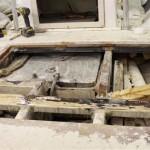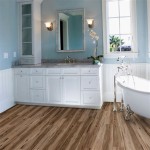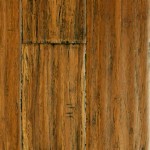The Enduring Appeal of Oak Hardwood Flooring
Oak hardwood flooring has remained a popular choice for homeowners and builders for centuries, owing to its durability, versatility, and aesthetic appeal. This enduring popularity stems from a combination of factors that make oak a practical and beautiful flooring solution for a wide range of architectural styles and interior design preferences. Understanding the characteristics of oak hardwood, its various grades and cuts, and the factors that influence its cost and installation can assist in making informed decisions when selecting flooring.
Understanding Oak: Properties and Characteristics
Oak is a hardwood derived from oak trees, which belong to the genus *Quercus*. Several species of oak are commonly used for flooring, each exhibiting subtle variations in color, grain pattern, and hardness. The two primary types of oak used in flooring are red oak and white oak. These types possess distinct properties that influence their suitability for different applications.
Red oak is characterized by its pinkish-red hue and open grain pattern. Its Janka hardness rating, a measure of wood's resistance to denting and wear, typically falls around 1290. Red oak is generally more porous than white oak, which makes it more susceptible to moisture absorption and, therefore, potentially less suitable for areas with high humidity or potential water exposure. However, its porous nature also makes it more receptive to stains, allowing for a wider range of color customization.
White oak, conversely, exhibits a more subdued brown or beige coloration with a tighter, more closed grain. Its Janka hardness rating is slightly higher, typically around 1360. White oak possesses natural tannins that make it more resistant to moisture and decay compared to red oak. This inherent resistance makes white oak a preferred choice for applications where moisture exposure is a concern, such as kitchens, bathrooms, and even exterior applications like decking (when properly treated). White oak's tighter grain pattern also makes it less prone to splintering.
Beyond the red oak and white oak distinction, variations exist within each species. For example, rift-sawn white oak presents a very linear grain pattern, while quarter-sawn white oak displays prominent ray flecks, adding visual interest and character to the flooring. These different cuts influence both the aesthetic and structural properties of the wood.
Grades and Cuts: Refining the Selection Process
The grade of oak hardwood flooring refers to the appearance and quality of the wood, based on the presence of knots, mineral streaks, color variations, and other natural characteristics. Grading systems provide a standardized way to assess the visual consistency and overall aesthetic of the flooring. Common grading categories include clear grade, select grade, common grade (also known as #1 common), and rustic grade.
Clear grade oak exhibits the least amount of natural character marks. It typically features minimal knots, color variation, and mineral streaks. This grade offers a uniform and refined appearance, making it a popular choice for modern and minimalist designs. Due to the scarcity of boards meeting this criteria, clear grade oak is generally the most expensive option.
Select grade oak allows for some minor imperfections, such as small knots and slight color variations. It offers a balance between visual consistency and natural character, making it a versatile choice for a wide range of design styles. Select grade provides a more natural look than clear grade while still maintaining a relatively uniform appearance.
Common grade oak showcases more pronounced natural character marks, including larger knots, more noticeable color variations, and mineral streaks. This grade offers a more rustic and informal aesthetic, often appealing to those seeking a more natural and organic look. Common grade oak is typically less expensive than clear or select grade.
Rustic grade oak displays the most pronounced natural character marks, including large, open knots, significant color variations, and even occasional imperfections like checks or cracks. Rustic grade is often used to create a reclaimed or antique look. It should be noted that rustic grade may require more careful installation to address potential structural inconsistencies arising from the prominent imperfections.
The cut of the oak lumber also influences its appearance and stability. The three primary cuts are plain-sawn, quarter-sawn, and rift-sawn. Plain-sawn lumber is the most common and economical cut, producing boards with a cathedral grain pattern. Quarter-sawn lumber is cut at a radial angle to the tree's rings, resulting in a straighter grain pattern and increased stability. Rift-sawn lumber is cut even more perpendicular to the tree's rings, producing the most linear grain pattern and the greatest dimensional stability. Quarter-sawn and rift-sawn lumber are generally more expensive due to the increased waste generated during the milling process.
Factors Influencing Cost and Installation
The cost of oak hardwood flooring varies depending on several factors, including the species of oak (red or white), the grade of the wood, the cut of the lumber, the width and thickness of the planks, and the finish applied. Wider planks and higher grades of oak typically command higher prices. Prefinished flooring generally costs more than unfinished flooring, but it can save on labor costs during installation.
Installation costs also contribute significantly to the overall expense of oak hardwood flooring. The installation method can vary depending on the type of flooring (solid or engineered), the subfloor material, and the desired aesthetic. Solid hardwood flooring is typically nailed or stapled to a wooden subfloor, while engineered hardwood flooring can be glued down, nailed, or floated over a variety of subfloors. The complexity of the installation, the size of the area to be covered, and the experience level of the installer will influence the overall labor costs.
Another cost consideration is the finish applied to the oak flooring. Common finishes include polyurethane, varnish, oil-based finishes, and water-based finishes. Polyurethane is a durable and cost-effective option that provides good protection against scratches and moisture. Varnish offers a similar level of protection but may require more frequent reapplication. Oil-based finishes penetrate the wood, enhancing its natural beauty and providing a warm, rich tone. Water-based finishes are low-VOC and dry quickly, making them an environmentally friendly option. The choice of finish will affect both the appearance and the maintenance requirements of the flooring.
Proper subfloor preparation is crucial for a successful oak hardwood flooring installation. The subfloor must be level, clean, and dry to prevent problems such as squeaking, warping, and buckling. Any imperfections in the subfloor should be addressed before installation begins. This may involve sanding down high spots, filling in low spots, or installing a new layer of plywood or underlayment.
Acclimation is another critical step in the installation process. Oak hardwood flooring should be acclimated to the room's environment for several days before installation to allow it to adjust to the temperature and humidity levels. This helps to minimize expansion and contraction after installation, reducing the risk of gaps or cupping.
Maintenance is also a long-term cost consideration. Oak hardwood flooring requires regular cleaning and occasional refinishing to maintain its appearance and protect it from wear and tear. Regular sweeping or vacuuming will remove dirt and debris, preventing scratches and damage to the finish. Occasional damp mopping with a pH-neutral cleaner can help to remove stains and spills. Refinishing may be necessary every 10-15 years, depending on the level of traffic and the type of finish applied. Refinishing involves sanding down the old finish and applying a new coat of finish, restoring the flooring to its original luster.
In summary, the selection and installation of oak hardwood flooring involves careful consideration of various factors, including the species of oak, the grade and cut of the lumber, the finish applied, and the installation method. Understanding these factors can assist in making informed decisions that balance cost, aesthetics, and performance. A well-chosen and properly installed oak hardwood floor can provide decades of beauty and durability, enhancing the value and appeal of a home.

Oak Hardwood Floors Chestnut Flooring Toronto Vaughan

Bellawood Artisan 5 8 In Geneva White Oak Engineered Hardwood Flooring 7 Wide Ll

White Oak Character Grade Unfinished Solid Hardwood Flooring 2 10 Random Lengths Floor Depot

Builder S Pride 3 4 In Red Oak Solid Hardwood Flooring 25 Wide Ll

3 1 4 X Red Oak Hardwood Flooring Hardwoods4less Com

What S The Difference Between Red Oak Flooring And White Hardwood Distributors Association

How White Oak Flooring Is Changing Interior Design Carlisle Wide Plank Floors

What Are The Pros And Cons Of White Oak Hardwood Floors Artisan Wood Llc

Benefits Of Red Oak Hardwood Flooring Mi Floor Services Cameron The Sandman Wood Contractor

Natural Oak Timber Flooring
Related Posts








